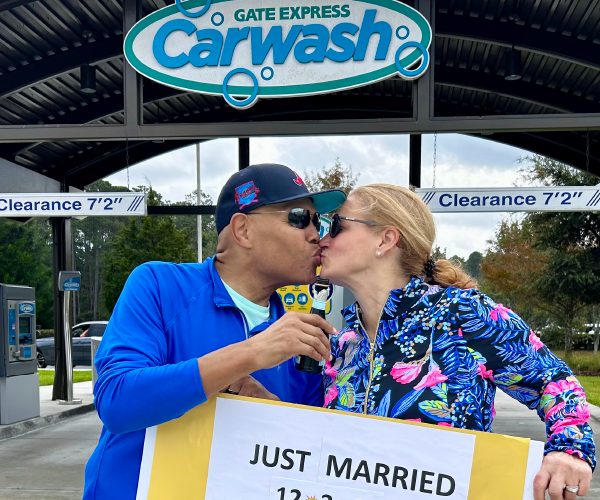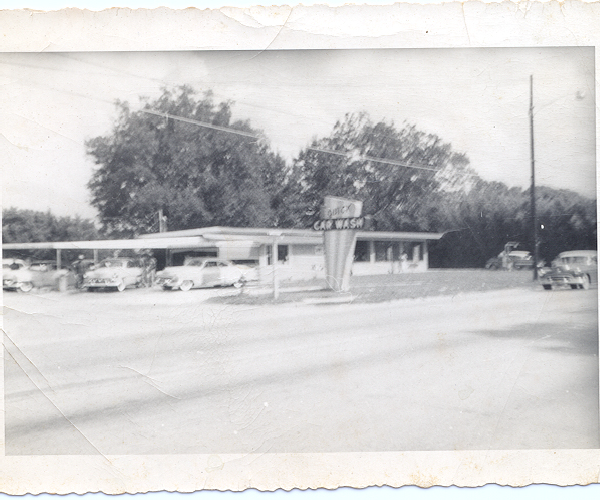
The Evolution of Email Marketing
February 20, 2023
10 minute ReadBy Nicole Needles
The world of digital marketing is ever-changing. It’s safe to say that every month the tides turn, and there is a new metric, tool or pitfall to watch out for. Emailing has been the reigning champion of marketing for the past several years. That is what we’ve known to be the case, but is that reality shifting? With social media and digital ads gaining popularity, the question of the next best thing is on marketers’ minds.
The answer is to turn to the best resources: customers and industry experts. Customers are the meter for what other channels are on the rise and what the next best marketing tactic is. Industry experts know what to do with this information and how to turn the pieces into a completed puzzle.
Is Email Marketing Still the Way To Go?
The overall answer is yes. Leveraging strategic distribution lists, automating communication and using customer data has made email an ingrained part of the lives of customers and a solid marketing strategy.
Dave Charest, director of small business success at Constant Contact, said, “Email marketing is a tried-and-true medium that customers have engaged with consistently over the years. Think about your experiences as a consumer — email is where you receive order confirmations, coupons and special offers, monthly bills, invitations to events and everything in between.”
Regarding a marketer’s perspective, Charest said that emails go to a group of people who have opted in and actively want to receive communications from your business. This volunteering is much more valuable than casting a wider net with social media ads or other marketing methods and is a much better starting point.
This take on digital marketing is just as prevalent for the car wash industry. Josh Taylor, chief marketing officer at OptSpot — a membership marketing company for car washes — said, "Email marketing is still one of the most effective marketing tools in today's digital age. Despite the rise of social media and other online platforms, email continues to be a key way to reach and engage customers."
Taylor also points out that email marketing is a much more widely trusted form of marketing by consumers. These messages are more personalized than ads or messaging they might see elsewhere, and, as mentioned above, these customers have asked for this form of communication in most cases.
“In addition, email marketing is very cost-effective, making it a great option for small businesses and startups. Overall, it’s clear that email marketing is still going strong and is unlikely to be replaced anytime soon,” Taylor said.
Marketing professionals at Feathr — a digital marketing company for nonprofits, associations and credit unions — are also singing
the praises of email marketing. Senior Digital Marketing Manager Rachel Burris said, “As somebody who strives for my inbox to be at zero, you might think I’m not a fan of email marketing. But the truth is that although the average email open rate across all industries is hovering around 21%, the return on investment is $36 to every dollar spent, so email marketing isn’t going anywhere. Nor should it.”
We’ve established that email marketing is still effective. But the use of it has evolved. As digital tools change and email privacy standards change, email marketers can’t use it the way they always have.
“Segmentation should absolutely be part of your marketing strategy now. One email does not fit all. Whether you’re a nonprofit organization or a for-profit company, each of your emails should be tailored to the audience that will receive them,” Burris said.

The Roadblock of Email Marketing
We’ve established that email is the true blue form of reaching customers, but there are always issues regarding technology. For email, this issue is Apple’s 2020 privacy updates. With a large portion of people being Apple product users, this new change puts a slight dent in email metrics.
What did this new update entail? Essentially, before the update, email senders could see when a user opened an email, where they were and what device they were on. This information reveal is due to a pixel within the email. To avoid the potential abuse of this private information, Apple automatically downloads images and text in the email, which used to only happen when a user opened the email. Now, Apple mailboxes automatically mark emails as opened — whether or not they were. This change adversely drives email open rate metrics up, but those numbers are not accurate.
Taylor said their users at OptSpot have felt the impact of this change. He suggests finding new metrics to measure customer engagement that are just as valuable to you as email open rates.
“One option is to focus more on click-through rates. Another option is to look at overall engagement levels, such as the number of people who visit a website or sign up for a lead generator. Ultimately, the best way to measure success will vary depending on the goals of a given campaign,” Taylor said.
Another important area to focus on is sales. Open rates, engagement, bounce rates, etcetera are great to measure how much customer interaction you are getting, but they might not necessarily measure business success.
“Sales is the only thing that keeps you in business. That’s why we track everything we can with our customers,” Taylor said. “We’re gathering data to know what text messages make money, what sales pages make money, what social media posts and ads make money. Only then can you truly measure success.”
What Are Customers Saying?
What customers are asking for can get more specific depending on the industry's nuances. However, some overall hard-and-fast rules still apply.
Customer action typically does not come from social media but emails leading to the company website. In other words, social media is not where the sales happen.
“More than 60% of small businesses we polled said they relied on social media to drive business results — but only 20% of consumers said that’s where they go when they want to buy. In fact, consumers prefer emails and texts from brands, unless they are just browsing around for fun,” Charest said. “Similarly, many small businesses like to send newsletters or other emails about business updates, and actually, what consumers are looking for are coupons and discounts. So, what that illustrates is how important it is for small businesses to really take the time to understand what their customers want from them.”
Another shift in today’s digital marketing world is how consumers choose to filter content. Every day we are blasted with messaging, pleas to buy the next product and prompts to subscribe to emails. As consumers, we tend to pay attention to personalized content. If a customer has already visited a car wash location, the messaging for them may not be “Come and get your car washed!” but rather “Hi, Kelly! We hope you enjoyed your wash. Check out our unlimited wash option!” This differentiation shows a human element, attention to detail and an eagerness to please the customer.
The other part of this is how mobile and on-the-go customers are now. Their tablets and phones have taken precedence over laptops and desktop computers. Having messaging that is easily accessible, relevant and personalized feeds into Taylor’s advice when it comes to what customers want.
“In recent years, there has been a shift in consumer preferences when it comes to marketing. We are now paying more attention to experiences and personalization and less to traditional advertising. This is driven by the increase in digital media usage and the overall change in how we consume content,” Taylor said. “We are now more likely to pay attention to things that are directly relevant to us and that we can easily access on our phones and laptops. This means that businesses need to focus on creating targeted content that speaks to the individual needs of their customers. They also need to ensure that this content is accessible and shareable across digital channels. By doing so, they will be able to reach more customers and build stronger relationships with them.”
With personalization comes a tactic called retargeting. This strategy is a way to branch out when reaching customers. At Feathr, this aspect of digital advertising is prominent.
“Have you visited a website and shown some love to a particular pair of shoes, or in my case, as an avid crocheter and lover of Schitt’s Creek, yarn designed to recall moments in the show? And then, later on, you happen to see an ad pop up of those very same pair of shoes – Rose Apothecary yarn, ahem – on the Weather website? That is retargeting. And it’s effective. In fact, website visitors who are retargeted are 70% more likely to convert.” Burris said.

What Other Channels Should We Employ?
We’ve heard a lot about how effective email marketing is. Other methods out there will also convert leads into customers and customers into returning customers, but what are they? With mobile phones becoming more popular for emails, it’s no surprise that SMS is a marketing tactic that has customers’ attention.
Constant Contact has recently implemented an SMS option for their users to quickly relay prevalent information to their customers.
“SMS has been the top requested feature from our customers for months, and it’s clear there is a demand from consumers to receive more information from their favorite businesses via text. We did some research recently that showed over half of consumers would consider making a purchase after receiving a text message from a small business.” Charest said. “For a small business, that means if you’re not sending SMS campaigns to your customers, you’re potentially leaving a lot of money on the table.”
Taylor echoes his sentiment that what customers want is personal and attainable. SMS accomplishes exactly that. A few years ago, you only got text messages from people you knew. Businesses were simply not on your phone in that nature.
Because of this, SMS tends to have a much higher open rate than emails. This engagement could be because text message notifications are more immediate for most people than email notifications. We also tend to open our text messages and not read them or take action, but it was still opened and seen. Emails may not be opened and stay unopened when they get lost in the sea of incoming communications.
Burris said, “With up to 98% open rates, SMS is definitely a digital channel to keep an eye on and begin adding to your digital marketing strategy. For nonprofits, in particular, having a text-to-give number can increase donations and provides a simple yet effective way for potential donors to support your mission.”
What’s the Next Big Thing?
Marketers and business owners are always moving forward. When trying to determine the next step, there are several important factors to consider. Pull from current marketing trends, but also ultimately do what works for your business and what proves successful with your customers.
Taylor advises keeping communication with customers a priority. Speaking with them instead of at them.
“Keep the lines of communication open. Once you’ve made initial contact with a potential customer, stay in touch and let them know what’s going on with your business,” Taylor said. “Regular communication will help build trust and rapport, making it more likely that they’ll do business with you when they’re ready.”
Burris advises not to be creepy. Keep your multi-channel marketing and personalization approach purposeful and informative rather than letting a customer know you know they visited your website with no call to action or intent.
When it came to her shoe and yarn scenario, it was a trickle-down experience of the initial product, an ad on a different website and a personalized email sent straight to her inbox. It was a multiple-step approach. And she bought the shoes.
“It worked because it wasn’t creepy. Most people know that their information is being tracked across the web and expect to be served ads that reflect that. I think we’ve all made jokes about Siri or Alexia listening in, especially when we get ads for something we swear we only talked about and never actually looked up,” she said. “But one big difference between being creepy and being credible is how helpful your marketing is. Are you solving a problem or being helpful or just showing that you know somebody read an article or looked at some yarn, shoes, etcetera? Sending an email or targeting an ad based on consumer behavior is smart – but how you do it is the difference.”
Coming back to doing what is right for your business in terms of the next marketing steps, Charest, who lives in the small business world, has practical advice for family-run businesses that may have a marketing team of one. He says it may become overwhelming for a small business to change with the slightest shift in the industry. Instead, consistency is key and will always be “the next big thing.”
“I always recommend to our customers that they focus on really nailing the fundamentals of good digital marketing. That means things like creating a website for your business, creating a mailing list, segmenting your audiences and delivering interesting and helpful content,” Charest said. “Sure, the technology will probably change, but humans are always going to be humans. Your job is to apply the technology to allow your customers to find, know, like and trust you with their business."









